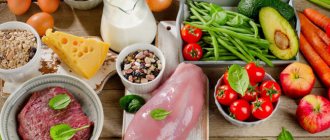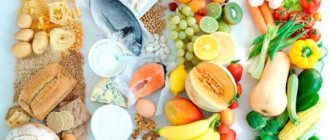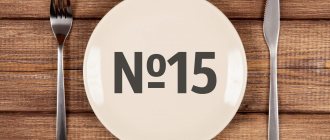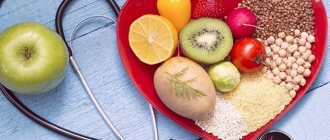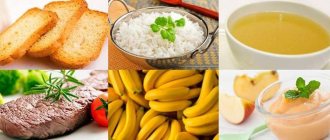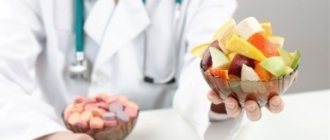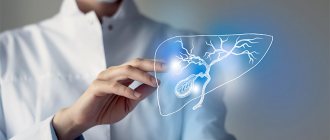People suffering from liver or gallbladder diseases know that their well-being directly depends on what they eat. Therefore, for such patients, nutritionists, together with specialized specialists, have created a special diet that allows them to maintain well-being at a normal level, and also helps the stomach to better absorb food. What should be the diet for liver and gallbladder disease?
Diseases of the liver and gall bladder, basic principles of nutrition
You will have to give up alcohol!
The liver is one of those organs in the human body that endures enormous loads every day. And in order for it to work as it should, it is necessary to “pity” it, that is, to lead the right lifestyle. Unfortunately, 90 percent of the world's inhabitants begin to monitor their diet only when problems have already begun to manifest themselves. This is especially true for the liver. There are several basic principles of nutrition if a person has one or another liver disease:
- In total, up to 2,500 calories should be consumed per day, especially if a person suffers from hepatitis
- You need to eat several times a day and in small portions. This is approximately four to six times a day, depending on your daily routine and opportunity. But 4 is the minimum number of techniques
- You can only eat boiled and steamed foods, because they do not put much strain on the gastrointestinal tract
- It is necessary to completely avoid fried foods. Such prepared dishes are quite heavy, and a diseased liver simply cannot cope with them
- You should only eat warm foods. Under no circumstances should you eat cold or hot, as such changes negatively affect the mucous membranes.
- You need to eat more foods containing fiber, as it stimulates the excretion of bile in the body
As for the gall bladder, the principles of nutrition are the same, because these two organs are closely interconnected, and what is good for the liver will be good for the gall bladder.
Fasting for gallstone disease
During the period of exacerbation of cholecystitis, which is accompanied by biliary colic, therapeutic fasting is recommended for a period of up to three days, during which they drink only mineral water. After fasting, juices (vegetables and fruits) are gradually and very carefully introduced into the diet.
The following juices are recommended:
- Carrot;
- Cucumber;
- Beetroot;
- Grapefruit;
- Grape;
- Pear;
- Lemon (with water).
If a particular juice is poorly tolerated, it is recommended to mix it with other juices and gradually increase the concentration.
Olive oil is very useful for gallstone disease; gastroenterologists recommend drinking a tablespoon twice a day.
Proteins, fats and carbohydrates
Daily protein requirement - from 80 to 90 grams
Particular attention should be paid to the amount of proteins, fats and carbohydrates in the daily diet, because not only the condition of the liver, but also the entire body depends on this, since cells and other organs must receive a normal amount of nutrients and vitamins. So, for diseases of the liver and gall bladder, the daily protein content should be from 80 to 90 grams. If there are much fewer proteins, this will lead to liver dystrophy and, as a consequence, the development of cirrhosis. It is best to eat foods that contain easily digestible proteins. For example, cottage cheese.
As for fats, they should not be more than 80 - 90 grams. A deficiency can lead to negative consequences, and an excess will increase the load on the organs. It is believed that in fact fats do not pose a particular danger to the liver, but if a person consumes them in large quantities, this leads to the deposition of cholesterol plaques, as well as excess weight, which is always harmful. Most of the daily portion of fat should be animal fats, which are better absorbed, and only one third should be vegetable fats. Fat improves the absorption of vitamins and nutrients, which is very important for a diseased liver. That is why patients are advised to add either butter or sunflower oil to their porridge.
Separately, it is necessary to say about carbohydrates. Under no circumstances should their quantity be reduced. The main thing is not to eat a lot of foods containing easily digestible carbohydrates. These include sugar and honey. It is best to allocate about 100 grams per day for them. The remaining 300-350 grams should be simple carbohydrates. Particular attention is paid to their quality, not quantity. True, this does not mean that you need to lean on foods that contain a lot of carbohydrates. Everything should be in moderation, because excessive consumption can lead to the deposition of fats in the liver, which is very bad, as well as stagnation of bile.
Diet number 5
Diet as part of the treatment of gallbladder diseases
Diet plays an important role for people suffering from liver and gallbladder diseases. Compliance with it guarantees normal well-being. Often, with some deviations from it, an exacerbation immediately develops, and the person has to go on a strict diet. Today, people suffering from these diseases are recommended to adhere to diet number five, which was developed specifically taking into account the physiological characteristics of the liver and gall bladder. She has several options, each of which is different from the previous one.
Diet 5a is prescribed in the acute period of Botkin's disease, in the case of chronic liver diseases (for example, hepatitis), during exacerbation of cholecystitis, as well as in inflammatory processes in other organs, such as the stomach and intestines. The peculiarity of this diet is that the patient limits the consumption of fats, especially refractory fats, and cholesterol. In addition, special attention is paid to nitrogenous substances, essential oils and purines. Their content should be reduced as much as possible. As for carbohydrates and proteins, they remain unchanged.
Allowed foods and dishes
Table No. 5 - tasty and healthy
You can highlight certain foods and dishes that are allowed to be eaten with any version of diet number 5. In fact, their list is quite impressive, so we can say that, despite some limitations, a person can eat practically as before, only reduce portions and eliminate fried foods. Permitted products include:
- Dairy products, namely milk, both plain and dry, cream, sour cream (it is best to eat fresh and in moderation), kefir. In addition, curd products play a particularly important role. You need to choose them carefully and give preference to low-fat cottage cheese
- Soups are made with vegetable broths, and you can add a little vegetable oil, but under no circumstances overcook them. You are also allowed to eat borscht with beets and cabbage soup. True, also in vegetable broth
- Fruit and milk soups
- Meat and fish, especially lean varieties. This includes beef, poultry, and certain types of fish. It is best to steam, boil or bake, as the beneficial properties are preserved and the dishes do not become harmful.
- Oil in moderation. So, it is allowed to consume a small amount of vegetable oil, butter and olive
- Egg yolks. It’s better to limit yourself to one a day, and not in its usual form, but added to dishes or baked goods.
- Porridge. It is best to make the porridge either crumbly or semi-viscous. Give preference to oatmeal and buckwheat. You can cook porridge with milk; some people even add cottage cheese to it for variety.
- Pasta that can be eaten either boiled or baked
- Vegetables, especially boiled and baked
- Mild cheese, low-fat ham
- Fruits and berries. True, you need to exclude sour
- Black, green tea, rosehip infusions, fruit juices
In fact, only from the outside it may seem that diet 5 (and all its types) is quite tough. Patients are allowed to eat almost anything, the main thing is to observe the calorie content.
Chronic calculous cholecystitis - diet
The chronic course of the disease is characterized by the virtual absence of an inflammatory reaction in the mucous membrane of the structures of the hepatobiliary system. Compliance with dietary recommendations is aimed at preventing exacerbation of the pathological process, as well as preventing the displacement of stones that can block the outlet for bile. Compared to the acute course of the disease, the diet is more expanded. It includes the same products as in the acute course of the pathological process, but they can also be prepared by stewing. You can also include no more than 30 g of oil per day.
Such dietary recommendations make it possible to reduce the further formation of stones in the lumen of the structures of the hepatobiliary system, which is associated with improper excretion of bile, its stagnation, as well as changes in its physicochemical properties.
Prohibited foods for liver and gallbladder diseases
Cholecystitis most often occurs due to poor nutrition
There is a list of foods that are strictly forbidden to eat if a person suffers from a particular liver or gallbladder disease. Such products include:
- Fatty fish and meat, because they sharply increase the load on the already weak liver and gall bladder
- Fried foods, since their calorie content increases several times, and the vegetable oil in which the dishes are prepared completely loses its beneficial properties and, on the contrary, becomes harmful
- Salo
- Fatty broths. Some people like the broth to be very fatty, but it is precisely such broths that are harmful not only to a diseased liver, but also to a healthy one.
- Any smoked meats, especially salami, cervelata
- Canned food
- By-products
- Legumes, since they are quite heavy and difficult for the stomach to digest
- Mushrooms
- Pickled products
- Buns, cakes
- Coffee
It is strictly forbidden for people with a diseased liver to drink alcoholic beverages, as they destroy it even more and cause intoxication of the body.
Acute calculous – cholecystitis diet
The acute course of this pathology is characterized by a significant inflammatory process of the mucous membrane of the organs of the hepatobiliary system. At the same time, dietary recommendations are quite strict; they are aimed at reducing the functional load on the liver and biliary tract. This diet for calculous cholecystitis and approximate nutrition include:
- Exclusion of fatty, fried, spicy foods, marinades.
- Refusal to take meat broths, which provoke increased secretion of bile.
- Preferably intake of plant foods, as well as lean, steamed meats.
- Among dairy products, low-fat cottage cheese is recommended, which protects liver cells (hepatocytes) from damage.
- Avoid drinking alcohol, coffee, and strong black tea, which significantly increase the functional load on hepatocytes and the structures of the hepatobiliary system.
Small but frequent meals are recommended, at least 5 times during the day. Dishes must be steamed or boiled. It is advisable to include fish (low-fat varieties), lean meats, cereals (buckwheat, rice), vegetables and fruits. This stricter diet continues until the acute manifestations of the pathological process subside.
